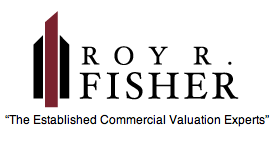Commercial real estate is different than residential real estate for a myriad of reasons. Perhaps the biggest one is that it is often purely an investment, even when it is an owner/user purchase. Residential real estate can also be an investment, but for most people, those properties are their homes first, an investment second. Yet just as people take care of their homes with an eye toward how changes affect their home value, it is even more vital for investors in commercial properties to be aware of what can change the value of their property.
Changes in supply and demand are one of the biggest factors in commercial property value. Competition for properties, and the number of interested parties can certainly raise the value of commercial real estate. Some of that is related directly to demographics. Growing populations create more of a need for commercial uses.
 Externally, economic forces such as an increase in interest rates like what we’ve seen over the last 18 months, tend to flatten the demand for commercial properties. The interest rates affect the ability of buyers to finance purchases. As SFGate reports, “Commercial properties and their market values react to broad economic conditions.”
Externally, economic forces such as an increase in interest rates like what we’ve seen over the last 18 months, tend to flatten the demand for commercial properties. The interest rates affect the ability of buyers to finance purchases. As SFGate reports, “Commercial properties and their market values react to broad economic conditions.”
According to Forbes, commercial real estate can be a hedge against inflation. “As the purchasing power of a currency drops, average property values tend to increase alongside new and existing commercial rentals as lease renewal rates increase. This is largely the case with already developed properties which have been around for some time. It’s likely that the interest rates on any loans taken out to purchase those properties were lower before inflation hit.”
The property itself can also be a determining factor in changes to the property value. If it’s an income-producing property, the ability of that property to generate income has an impact on the property’s value. On a gross basis, the rent a property receives, and on a net basis, the income to the owner after expenses, all play a role in changes to the value. Increased property tax assessments and operating expenses can reduce the value of properties as the net income declines. Additionally, the presence of deferred maintenance can cause values to decline.
The loss of a tenant can affect not just the property the tenant was renting but could also impact surrounding properties. In a retail environment, for example, if a big anchor store in a shopping complex leaves, that can have a negative impact on the surrounding businesses and property values if a new tenant does not take over that property. That doesn’t mean the loss of a tenant always decreases value. If there’s enough synergy in an area, the loss of one tenant might not affect the surrounding businesses and properties. if there’s a realistic expectation that a similar tenant will come into that space and create the same kind of traffic.
Coming back to demographics, rises or declines in populations. changes in the number of households and median incomes can have a positive or negative impact on commercial properties. For those investing in commercial properties, it’s worth keeping an eye on all these factors to evaluate your property’s worth.
